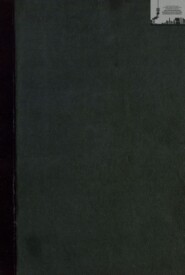По всем вопросам обращайтесь на: info@litportal.ru
(©) 2003-2024.
✖
The Winter’s Tale
Настройки чтения
Размер шрифта
Высота строк
Поля
Right ill-dispos’d in brawl ridiculous,
The name of Agincourt, (lines 49–52)
In A Midsummer Night’s Dream (Act V, Scene i) he seems to dismiss actors with the words:
The best in this kind are but shadows.
Yet Elizabeth’s theatre, with all its faults, stimulated dramatists to a variety of achievement that has never been equalled and, in Shakespeare, produced one of the greatest writers in history. In spite of all his grumbles he seems to have been fascinated by the challenge that it presented him with. It is necessary to re-examine his theatre carefully in order to understand how he was able to achieve so much with the materials he chose to use. What sort of place was the Elizabethan playhouse in reality? What sort of people were these criticized actors? And what sort of audiences gave them their living?
The Development of the Theatre up to Shakespeare’s Time
For centuries in England noblemen had employed groups of skilled people to entertain them when required. Under Tudor rule, as England became more secure and united, actors such as these were given more freedom, and they often performed in public, while still acknowledging their ‘overlords’ (in the 1570s, for example, when Shakespeare was still a schoolboy at Stratford, one famous company was called ‘Lord Leicester’s Men’). London was rapidly becoming larger and more important in the second half of the sixteenth century, and many of the companies of actors took the opportunities offered to establish themselves at inns on the main roads leading to the City (for example, the Boar’s Head in Whitechapel and the Tabard in South-wark) or in the City itself. These groups of actors would come to an agreement with the inn-keeper which would give them the use of the yard for their performances after people had eaten and drunk well in the middle of the day. Before long, some inns were taken over completely by companies of players and thus became the first public theatres. In 1574 the officials of the City of London issued an order which shows clearly that these theatres were both popular and also offensive to some respectable people, because the order complains about ‘the inordinate haunting of great multitudes of people, specially youth, to plays interludes and shows; namely occasion of frays and quarrels, evil practices of incontinency in great inns …’ There is evidence that, on public holidays, the theatres on the banks of the Thames were crowded with noisy apprentices and tradesmen, but it would be wrong to think that audiences were always undiscriminating and loudmouthed. In spite of the disapproval of Puritans and the more staid members of society, by the 1590s, when Shakespeare’s plays were beginning to be performed, audiences consisted of a good cross-section of English society, nobility as well as workers, intellectuals as well as simple people out for a laugh; also (and in this respect English theatres were unique in Europe), it was quite normal for respectable women to attend plays. So Shakespeare had to write plays which would appeal to people of widely different kinds. He had to provide ‘something for everyone’ but at the same time to take care to unify the material so that it would not seem to fall into separate pieces as they watched it. A speech like that of the drunken porter in Macbeth could provide the ‘groundlings’ with a belly-laugh, but also held a deeper significance for those who could appreciate it. The audience he wrote for was one of a number of apparent drawbacks which Shakespeare was able to turn to his and our advantage.
Shakespeare’s Actors
Nor were all the actors of the time mere ‘rogues, vagabonds and sturdy beggars’ as some were described in a Statute of 1572. It is true that many of them had a hard life and earned very little money, but leading actors could become partners in the ownership of the theatres in which they acted: Shakespeare was a shareholder in the Globe and the Blackfriars theatres when he was an actor as well as a playwright. In any case, the attacks made on Elizabethan actors were usually directed at their morals and not at their acting ability; it is clear that many of them must have been good at their trade if they were able to interpret complex works like the great tragedies in such a way as to attract enthusiastic audiences. Undoubtedly some of the boys took the women’s parts with skill and confidence, since a man called Coryate, visiting Venice in 1611, expressed surprise that women could act as well as they: ‘I saw women act, a thing that I never saw before … and they performed it with as good a grace, action, gesture … as ever I saw any masculine actor.’ The quality of most of the actors who first presented Shakespeare’s plays is probably accurately summed up by Fynes Moryson, who wrote, ‘… as there be, in my opinion, more plays in London than in all the parts of the world I have seen, so do these players or comedians excel all other in the world.’
The Structure of the Public Theatre
Although the ‘purpose-built’ theatres were based on the inn-yards which had been used for play-acting, most of them were circular. The walls contained galleries on three storeys from which the wealthier patrons watched, they must have been something like the ‘boxes’ in a modern theatre, except that they held much larger numbers – as many as 1500. The ‘groundlings’ stood on the floor of the building, facing a raised stage which projected from the ‘stage-wall’, the main features of which were:
1 a small room opening on to the back of the main stage and on the same level as it (rear stage),
2 a gallery above this inner stage (upper stage),
3 canopy projecting from above the gallery over the main stage, to protect the actors from the weather (the 700 or 800 members of the audience who occupied the yard, or ‘pit’ as we call it today, had the sky above them).
In addition to these features there were dressing-rooms behind the stage and a space underneath it from which entrances could be made through trap-doors. All the acting areas – main stage, rear stage, upper stage and under stage – could be entered by actors directly from their dressing rooms, and all of them were used in productions of Shakespeare’s plays. For example, the inner stage, an almost cavelike structure, would have been where Ferdinand and Miranda are ‘discovered’ playing chess in the last act of The Tempest, while the upper stage was certainly the balcony from which Romeo climbs down in Act III of Romeo and Juliet.
It can be seen that such a building, simple but adaptable, was not really unsuited to the presentation of plays like Shakespeare’s. On the contrary, its simplicity guaranteed the minimum of distraction, while its shape and construction must have produced a sense of involvement on the part of the audience that modern producers would envy.
Other Resources of the Elizabethan Theatre
Although there were few attempts at scenery in the public theatre (painted backcloths were occasionally used in court performances), Shakespeare and his fellow playwrights were able to make use of a fair variety of ‘properties’, lists of such articles have survived: they include beds, tables, thrones, and also trees, walls, a gallows, a Trojan horse and a ‘Mouth of Hell’; in a list of properties belonging to the manager, Philip Henslowe, the curious item ‘two mossy banks’ appears. Possibly one of them was used for the
bank whereon the wild thyme blows,
Where oxlips and the nodding violet grows
in A Midsummer Night’s Dream (Act II, Scene i). Once again, imagination must have been required of the audience.
Costumes were the one aspect of stage production in which trouble and expense were hardly ever spared to obtain a magnificent effect. Only occasionally did they attempt any historical accuracy (almost all Elizabethan productions were what we should call ‘modern-dress’ ones), but they were appropriate to the characters who wore them: kings were seen to be kings and beggars were similarly unmistakable. It is an odd fact that there was usually no attempt at illusion in the costuming: if a costume looked fine and rich it probably was. Indeed, some of the costumes were almost unbelievably expensive. Henslowe lent his company £19 to buy a cloak, and the Alleyn brothers, well-known actors, gave £20 for a ‘black velvet cloak, with sleeves embroidered all with silver and gold, lined with black satin striped with gold’.
With the one exception of the costumes, the ‘machinery’ of the playhouse was economical and uncomplicated rather than crude and rough, as we can see from this second and more leisurely look at it. This meant that playwrights were stimulated to produce the imaginative effects that they wanted from the language that they used. In the case of a really great writer like Shakespeare, when he had learned his trade in the theatre as an actor, it seems that he received quite enough assistance of a mechanical and structural kind without having irksome restrictions and conventions imposed on him; it is interesting to try to guess what he would have done with the highly complex apparatus of a modern television studio. We can see when we look back to his time that he used his instrument, the Elizabethan theatre, to the full, but placed his ultimate reliance on the communication between his imagination and that of his audience through the medium of words. It is, above all, his rich and wonderful use of language that must have made play-going at that time a memorable experience for people of widely different kinds. Fortunately, the deep satisfaction of appreciating and enjoying Shakespeare’s work can be ours also, if we are willing to overcome the language difficulty produced by the passing of time.
Shakespeare: A Timeline
Very little indeed is known about Shakespeare’s private life; the facts included here are almost the only indisputable ones. The dates of Shakespeare’s plays are those on which they were first produced.
Life & Times
William Shakespeare the Playwright
There exists a curious paradox when it comes to the life of William Shakespeare. He easily has more words written about him than any other famous English writer, yet we know the least about him. This inevitably means that most of what is written about him is either fabrication or speculation. The reason why so little is known about Shakespeare is that he wasn’t a novelist or a historian or a man of letters. He was a playwright, and playwrights were considered fairly low on the social pecking order in Elizabethan society. Writing plays was about providing entertainment for the masses – the great unwashed. It was the equivalent to being a journalist for a tabloid newspaper.
In fact, we only know of Shakespeare’s work because two of his friends had the foresight to collect his plays together following his death and have them printed. The only reason they did so was apparently because they rated his talent and thought it would be a shame if his words were lost.
Consequently his body of work has ever since been assessed and reassessed as the greatest contribution to English literature. That is despite the fact that we know that different printers took it upon themselves to heavily edit the material they worked from. We also know that Elizabethan plays were worked and reworked frequently, so that they evolved over time until they were honed to perfection, which means that many different hands played their part in the active writing process. It would therefore be fair to say that any play attributed to Shakespeare is unlikely to contain a great deal of original input. Even the plots were based on well known historical events, so it would be hard to know what fragments of any Shakespeare play came from that single mind.
One might draw a comparison with the Christian bible, which remains such a compelling read because it came from the collaboration of many contributors and translators over centuries, who each adjusted the stories until they could no longer be improved. As virtually nothing is known of Shakespeare’s life and even less about his method of working, we shall never know the truth about his plays. They certainly contain some very elegant phrasing, clever plot devices and plenty of words never before seen in print, but as to whether Shakespeare invented them from a unique imagination or whether he simply took them from others around him is anyone’s guess.
The best bet seems to be that Shakespeare probably took the lead role in devising the original drafts of the plays, but was open to collaboration from any source when it came to developing them into workable scripts for effective performances. He would have had to work closely with his fellow actors in rehearsals, thereby finding out where to edit, abridge, alter, reword and so on.
In turn, similar adjustments would have occurred in his absence, so that definitive versions of his plays never really existed. In effect Shakespeare was only responsible for providing the framework of plays, upon which others took liberties over time. This wasn’t helped by the fact that the English language itself was not definitive at that time either. The consequence was that people took it upon themselves to spell words however they pleased or to completely change words and phrasing to suit their own preferences.
It is easy to see then, that Shakespeare’s plays were always going to have lives of their own, mutating and distorting in detail like Chinese whispers. The culture of creative preservation was simply not established in Elizabethan England. Creative ownership of Shakespeare’s plays was lost to him as soon as he released them into the consciousness of others. They saw nothing wrong with taking his ideas and running with them, because no one had ever suggested that one shouldn’t, and Shakespeare probably regarded his work in the same way. His plays weren’t sacrosanct works of art, they were templates for theatre folk to make their livings from, so they had every right to mould them into productions that drew in the crowds as effectively as possible. Shakespeare was like the helmsman of a sailing ship, steering the vessel but wholly reliant on the team work of his crew to arrive at the desired destination.
It seems that Shakespeare certainly had a natural gift, but the genius of his plays may be attributable to the collective efforts of Shakespeare and others. It is a rather satisfying notion to think that his plays might actually be the creative outpourings of the Elizabethan milieu in which Shakespeare immersed himself. That makes them important social documents as well as seminal works of the English language.
Money in Shakespeare’s Day
It is extremely difficult, if not impossible, to relate the value of money in our time to its value in another age and to compare prices of commodities today and in the past. Many items are simply not comparable on grounds of quality or serviceability.
There was a bewildering variety of coins in use in Elizabethan England. As nearly all English and European coins were gold or silver, they had intrinsic value apart from their official value. This meant that foreign coins circulated freely in England and were officially recognized, for example the French crown (écu) worth about 30p (72 cents), and the Spanish ducat worth about 33p (79 cents). The following table shows some of the coins mentioned by Shakespeare and their relation to one another.
A comparison of the following prices in Shakespeare’s time with the prices of the same items today will give some idea of the change in the value of money.
INTRODUCTION
As a budding playwright, Shakespeare was attacked by an older writer, Robert Greene, for plagiarism: ‘an upstart Crow, beautified with our feathers’. Towards the end of his career, for his next-to-last play to be completed, Shakespeare drew upon a story by this same Greene, and so created The Winter’s Tale.
In Shakespeare’s own period, older playgoers, remembering Greene and seeing this work for the first time, must have thought they knew how it ended. The king, consumed by jealousy, repudiates his queen, who dies. He soon after recognises his error, but it is too late. That, at least, is the story of Greene’s Pandosto. Shakespeare, however, picks up this simple tale and turns it into a myth of resurrection. We all, like the early playgoers, think Hermione to be dead. We see her fall, deadly sick, on stage. News of her death is brought by Paulina, whom we know to be a reliable witness. Sixteen years pass, without any sign of her.
Tragedy lies very close to comedy here. The earlier episodes, the autumn and winter parts of the play, display the imagery of disease and dearth: ‘Why then the world and all that’s in’t is nothing;/The covering sky is nothing; Bohemia nothing;/my wife is nothing; nor nothing have those nothings,/If this be nothing’. But those corrugated rhythms give way to the comedy of Autolycus and his song of spring: ‘When daffodils begin to peer,/With heigh! the doxy over the dale’. There is the daughter who was thought lost, Perdita in her harvest scene, also evoking the spring: ‘daffodils,/That come before the swallow dares, and take/The winds of March with beauty’. This prefigures the restoration of Hermione, which is the key to the play.
The meeting of Perdita with Leontes, her father, which could have been one of Shakespeare’s reconciliation set-pieces, is reported at second hand in order to preserve the grand climax for the restitution of Hermione. There, at the end, is the Statue Scene when Hermione rises, as though from the dead, and joins her repentant husband.
So far from attempting to seem naturalistic, the text drives home the impossibilities: ‘That she is living,/Were it but told you, should be hooted at/Like an old tale’. But Shakespeare has paid the ‘old tale’ of his former enemy, Robert Greene, the supreme compliment of turning it into high drama. Leontes says, ‘I saw her,/As I thought, dead; and have, in vain, said many/A prayer upon her grave’. However, the prayers have not been in vain. The whole scene is an acting out of resurrection.
The extravagance of the plot is matched by that of the structure. Such critics as the Italian, Castelvetro, and the Englishman, Sir Philip Sidney, thought that the Greek philosopher, Aristotle, had imposed rules on the drama that decreed restrictions as to the time a play should encompass in its action, the place – only one – it should represent, and the plot – very simple – that it should deploy. These rules were called ‘unities’, and Shakespeare violated these unities in an exuberant fashion. The action covers sixteen years, and not smoothly: there is a gaping void between Act 3 and Act 4. The scenes swerve between Sicily, the kingdom of Leontes, and Bohemia, the kingdom of his supposed rival, Polixenes. The plot, as we have seen, is far-fetched beyond all decorum. However, the appeal is not to the intricacies of art, but to nature. In the end, what we are shown is nature’s own cycle, represented in the death and restoration of Hermione. She is a kind of earth goddess. We see the earth die, every winter. Yet it revives in the spring. It is an idea similar to that of Jesus’ parable of the Prodigal Son. He ‘was dead, and is alive again; he was lost, and is found’ (Luke 15:24).
LIST OF CHARACTERS
ACT ONE
Scene I
Sicilia. The palace of Leontes.

















